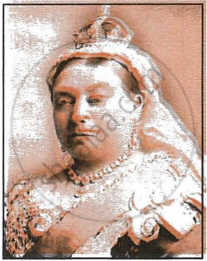Advertisements
Advertisements
प्रश्न
What impact did the Uprising of 1857 have on the Peshwaship?
उत्तर
- The Uprising of 1857 led to the abolition of the Peshwaship. After the rebellion, Nana Sahib, the last Peshwa, played a significant role in the revolt, but his defeat marked the end of the Peshwa line.
- The British formally dissolved the Peshwaship, and no further claims to the title were recognised, effectively ending the Maratha leadership in India.
- The British rulers declared emphatically their policy of non-interference in the religious affairs, customs and traditions of the Indians.
APPEARS IN
संबंधित प्रश्न
What impact did the uprising of 1857 have on the Mughal rule?
Answer the following question in one or two words/sentences:
Mention any two important results of the Revolt.
Answer the following question briefly:
In the context of the Revolt of 1857, briefly discuss:
Any four results of the Revolt of 1857
The Revolt of 1857 was the beginning of the independence struggle against the colonial rule of the British. With reference to the consequences of the Revolt, answer the following:
Mention any three changes made in the administration with the end of the Company's Rule.
The Revolt of 1857 was the beginning of the independence struggle against the colonial rule of the British. With reference to the consequences of the Revolt, answer the following:
Mention any four changes made in the army after the Revolt.
| The Indian Rebellion of 1857 was a major uprising against the rule of the British East India Company, which functioned as a sovereign power on behalf of the British Crown. With reference to this, answer the following question: |
How did the failure of this Revolt impact the Mughals and the Peshwas?
| The Indian Rebellion of 1857 was a major uprising against the rule of the British East India Company, which functioned as a sovereign power on behalf of the British Crown. With reference to this, answer the following question: |
The India army was reorganised after 1858, to prevent the reoccurrence of another uprising. Analyse this statement by stating any four changes made in the army after the Revolt.
Under the Government of India Act 1858, who gave up the direct administration of India?
State any two consequences of the disbanding of the armies of the annexed States by the British.
Study the picture and answer the following questions:

- Identify the person in the picture. Name the proclamation made by her in 1858.
- Where and by whom was this proclamation made public?
- What assurance did this proclamation give to the Indian people regarding
- religious freedom and
- appointment to public offices?
